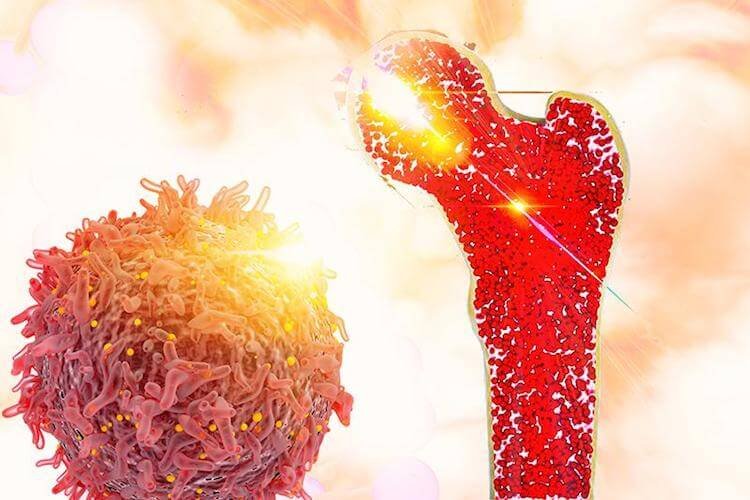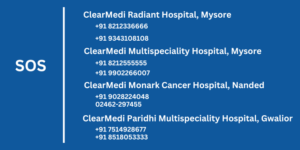Home / Departments / Bone Marrow Transplant

Overview
ClearMedi is a trusted name for Bone Marrow Transplant and provides these treatments in self-managed Hospitals/Cancer Centers and partner Hospitals. These facilities are equipped with best-in-class equipment and have a highly-experienced team of doctors. They have successfully performed ___ bone marrow transplants across the country.
ClearMedi has achieved unprecedented success rates in treating both malignant and benign disorders like Thalassemia, Advanced Paediatric Solid Tumors and Multiple Myelomas. The doctors are well-qualified to handle even the most complicated cases of refractory leukaemia, lymphoma and severe aplastic anaemia. ClearMedi facilities offer both allogeneic and autologous stem cell transplantusing bone marrow, peripheral blood stem cells and cord blood stem cells. Owing to these capabilities, ClearMedi has established itself as a major referral centre and caters to international patients as well.
ClearMedi facilities are equipped with ultra-modern laboratories and transfusion services. A few facilities also have a sophisticated radiation oncology unit that supports total body irradiation. BMT is a critical treatment and our facilities follow strict anti-infection standards to provide a safe environment to the patients.
Our team comprises of highly-qualified and experienced haematologists and medical and pediatric oncologists. We also have specially trained nursing and paramedical staff to support quality medical care at our facilities.
- Bone marrow is a spongy fatty tissue inside some bones like the hip and thigh bone which contain stem cells. These special types of cells can create different kinds of blood cells like white blood cells, red blood cells, and platelets.
- If a patient is suffering from one of several types of cancers, it can restrict the normal development of blood cells (or hematopoietic cells) in the bone marrow.
- In such scenarios, a BMT or stem cell transplant provides the new hematopoietic kind of stem cells. These new cells turn into multiple healthy and disease-free blood cells and improve the quantity and quality of blood produced by the body. This way, the patients get a new life.
- A bone marrow transplant is a procedure that infuses healthy blood stem cells into patient’s body to replace damaged or diseased bone marrow. A bone marrow transplant (BMT) is also called a Stem Cell Transplant.
- BMT may be necessary if bone marrow stops working and is not able to produce enough healthy blood cells.
- Bone marrow transplants may use cells from one’s own body (autologous transplant) or from a donor (allogeneic transplant).
The Stem Cells can be collected from patient’s own body or can be harvested from another person. This other person is known as donor.
- Autologous Transplant
Stem cells are taken from the patient either by bone marrow harvest or apheresis (peripheral blood stem cells) and then given back to the patient after conditioning treatment.
- Allogeneic Transplant
The donor has the same HLA type as the patient. Stem cells are taken either by bone marrow harvest or apheresis (peripheral blood stem cells) from a HLA matched donor, usually a brother or sister. Other donors for allogeneic bone marrow transplants include the following:
- An identical twin – A syngeneic transplant is an allogeneic transplant from an identical twin. Identical twins are considered a complete genetic match for a transplant.
- Unrelated transplants (UBMT or MUD, for matched unrelated donor) – The HLA matched stem cells are from an unrelated donor, usually found through the national registries.
- Umbilical Cord Blood transplant – Stem cells are taken from an umbilical cord immediately after delivery of an infant. The stem cells are tested, typed, counted and frozen until they are ready to be transplanted.
A bone marrow transplant may be used to:
- Safely allow treatment of patient’s condition with high doses of chemotherapy or radiation by replacing or rescuing bone marrow damaged by treatment,
- Replace diseased or damaged marrow with new stem cells,
- Provide new stem cells, which can help kill cancer cells directly.
- Autologous Transplant (Stem Cells collected from one’s own body)
- Hodgkin’s &Non-Hodgkin’s Lymphoma: For relapsed / refractory cases, it is standard therapy and in most such cases, it is the only curative option.
- Myeloma: Although not curative, it is standard treatment as a part of initial therapy, as it prolongs survival substantially.
- Leukemia: Acute Myeloid Leukemia as part of consolidation therapy, to increase chance of cure in this disease.
- Allogenic Transplant (Stem Cells collected from someone else’s body)
- Thalassemia
- Several other genetic disorders, especially with single gene defects
- Aplastic Anemia
- Chronic Myeloid Leukemia
- High Risk AML & Relapsed AML
- Relapsed ALL (Acute Lymphocytic Leukemia)
- As an option in several advanced or refractory hematological malignancies e.g., follicular lymphoma, CLL, myeloma etc.

